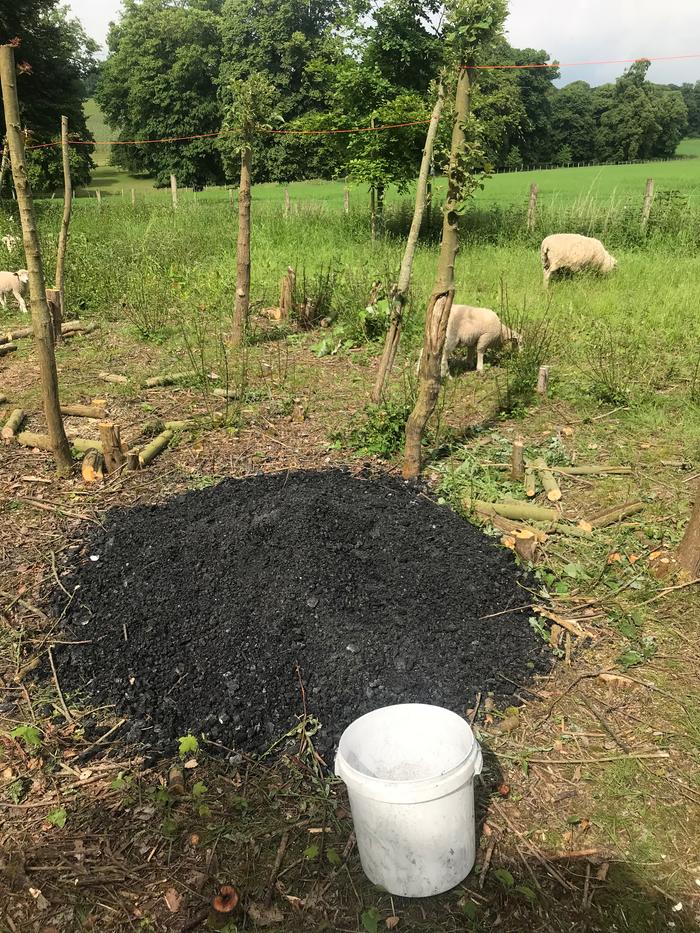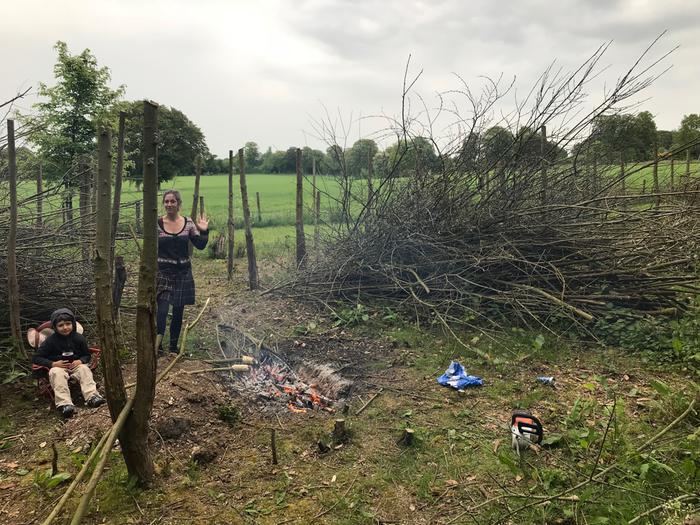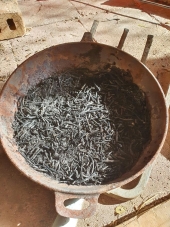




![Filename: rice-coal-2.jpg
Description: [Thumbnail for rice-coal-2.jpg]](/t/129868/a/95379/rice-coal-2.jpg)
![Filename: cats-pride-litterdpi.png
Description: [Thumbnail for cats-pride-litterdpi.png]](/t/129868/a/95381/cats-pride-litterdpi.png)
![Filename: 187032.jpg
Description: [Thumbnail for 187032.jpg]](/t/129868/a/95383/187032.jpg)
 3
3




Moderator, Treatment Free Beekeepers group on Facebook.
https://www.facebook.com/groups/treatmentfreebeekeepers/





 1
1










 1
1




Moderator, Treatment Free Beekeepers group on Facebook.
https://www.facebook.com/groups/treatmentfreebeekeepers/









 1
1




A build too cool to miss:Mike's GreenhouseA great example:Joseph's Garden
All the soil info you'll ever need:
Redhawk's excellent soil-building series













Vanessa Alarcon wrote:Hi Trace, there was a post regarding the use
of sodium benonite clay in addition to bio char to add to the water retention capabilities. http://www.plantsman.com.au/page2/files/Plantsman%20Adding%20clay.pdf
(Thanks, Nancy Sutton) You mix 2 lb (1kg) in a bucket and you fill it 3/4 w/ water and you then spread it over 3 sqft (1 meter).

A build too cool to miss:Mike's GreenhouseA great example:Joseph's Garden
All the soil info you'll ever need:
Redhawk's excellent soil-building series





 2
2




It's time to get positive about negative thinking  -Art Donnelly
-Art Donnelly
 1
1




It's time to get positive about negative thinking  -Art Donnelly
-Art Donnelly
 1
1




 2
2





Moderator, Treatment Free Beekeepers group on Facebook.
https://www.facebook.com/groups/treatmentfreebeekeepers/









Michael Cox wrote:Just a thought re "buying biochar when you need it"
From your comments I believe that you are thinking of biochar as rather like a fertiliser - you add it to the soil when setting up a new bed, or at certain times of year or under certain conditions. It doesn't really act like any other fertiliser, or soil additive. Instead of being something that is used up it permanently changes the soil structure, making it biologically more active and allowing the soil to store and release more nutrients (as opposed to leaching away).
I take the view that adding biochar to my soil is like a 10 to 20 year investment. I'm not counting on any particular benefits in a particular growing season, and I see no reason to add it at a certain time, or under certain conditions - or even applying it with any consistent method. In practice I make char when I have woody material I need to dispose of, and topdress it thinly in my planting areas at any time. The natural cycle of soil disturbance - planting, harvesting, worms, moles, birds scratching etc... - cycle that char material down into the soil where it becomes integrated into the root zone over a few seasons. Plus I top dress regularly with compost, spoiled hay or other mulch burying it directly. These days I don't intentionally dig it in; although I might take the time to add some if I am digging soil for other reasons. I also don't take special efforts to charge my biochar; I know that my soil is full of active bacteria and fungi that will quickly colonise it, and I add nutrients through other means (compost).
This approach means that I never "need" biochar; it is a fortuitous event when I can make some, and I take advantage of it, but I don't go out of my way to spend money or effort on the process.
This thread has my experience making biochar at home using a simple low cost trench method.

Making char

The resulting pile - quenched with water, allowed to sit for a few days, then top dressed 1/4" thick over the growing beds.
A build too cool to miss:Mike's GreenhouseA great example:Joseph's Garden
All the soil info you'll ever need:
Redhawk's excellent soil-building series









Michael Cox wrote:Just a thought re "buying biochar when you need it"
From your comments I believe that you are thinking of biochar as rather like a fertiliser - you add it to the soil when setting up a new bed, or at certain times of year or under certain conditions. It doesn't really act like any other fertiliser, or soil additive. Instead of being something that is used up it permanently changes the soil structure, making it biologically more active and allowing the soil to store and release more nutrients (as opposed to leaching away).
 1
1




Vanessa Alarcon wrote:
"The ability to have biochar available to amend a newly formed bed for long term biodiversity". For example, this year i'm building 3 raised beds filled in a hugelkultur way with old and new wood. I feel that this is the right time to add biochar, along with other nutrients, compost etc, so that each bed will have the best possible start. Also, I don't expect a new bed to produce gangbusters in the first few years. This is a long time investment for good, healthy soil. Currently all i have is sand, seriously!.....
But to go back, if at the end of my life, i leave this soil holding on to nutrients, rather than them running through it like a sieve, i'll feel i have done my job.
Great pics, btw!
Moderator, Treatment Free Beekeepers group on Facebook.
https://www.facebook.com/groups/treatmentfreebeekeepers/





 1
1




It's time to get positive about negative thinking  -Art Donnelly
-Art Donnelly
 1
1








nancy sutton wrote:Again, I'd like to point out that context may be most important factor. Florida (semi-tropical) and Kent (temperate) have very different soil bases and climates. I believe that in semi-tropical conditions, organic material decomposes, volatilizes, disappears etc much, much more rapidly than in cooler temperate soils, which is why anthropologists thought no large populations could ever have arisen in the Amazonian jungles.
Moderator, Treatment Free Beekeepers group on Facebook.
https://www.facebook.com/groups/treatmentfreebeekeepers/









Buster Parks wrote:Couple thoughts I haven't seen yet.
Not sure you want to mix everything you are talking about together, seems like the clay should mostly be a base layer to help hold all the good stuff in place on top of it. I've done the clean briquette method, it will start to smell quickly, two weeks is probably overkill for soaking in urine. Also not sure you need to charge the biochar so well before putting it in the ground. It's a high surface area substrate so it will act like a filter and charge itself over time. Plus the biology will consume some stuff from it and leave other stuff behind. If you can find a source of top soil with more clay in it that would probably be good too, both under the biochar and other compost type stuff you add, plus on top to get a nice thick soil layer. I think most hugels end up with too little dirt so having some decent soil to add on top will be good as well. Mostly I'd suggest layering, with the clay on the bottom (or most of it below whatever mix you come up with) And the compost plus other additives on top. I'd probably mix everything with some free top soil/fill dirt to spread it out more as well, versus having a thin layer of each.
Looking ahead a bit, perennials with year round roots should help hold the good stuff in place too.
Also, if you are doing three mounds, feel free to experiment and report back.




It's time to get positive about negative thinking  -Art Donnelly
-Art Donnelly




nancy sutton wrote:Sure, Vanessa..I suspect you'll find a different brand, but I got 'Paws and Claws' brand, clumping clay (it holds more water than the non-clumping type). Look for a 'feed/farm' type store, where they sell the cheapest litter, in larger boxes.. for cat kennels, etc. Also, if you can find a 'drilling supply' outlet, they sell larger bags of the plain clay (it is used to line the holes)... they may have cheaper 'broken' bags. Also, I think I heard that straight clay + straight sand = concrete, so be sure to mix the clay with organic material, when putting it in the hugel :) Looks like you have an adventure ahead, and glad that others in your area are succeeding :)




Vanessa Alarcon wrote:
Hi Buster! Thanks for all the info. I agree that I might be throwing everything and the kitchen sink when activating the coal but in my defense 1) I’m starting these beds on a surface of white sugar sand with maybe a millimeter of soil covering it. And the weather here means baking sun and torrential monsoon (exaggerating but not by much) that just leach everything out of the soil. And most importantly 2) I’m Latina and that’s just how we cook 🤪🙃🤣
But in all seriousness,( i am going to experiment with the clay, however) do you think there’s a chance of me causing harm or burning the plants? I’ve seen some you tube videos of people with hukel beds in my zone 9A and they have done pretty well, I don’t expect great results from the start and I know everything will reduce. And I will be specially careful to put a good thick layer of top soil and maybe amend with a bit of clay too if Ms. Sutton shares her brand with me
I’m going to use 1 bed for annual greens, bed 2 for mostly tomatoes and peppers and bed 3 for herbs and edible perennials .
Oh and most importantly! Could you please share the name brand of the clean briquettes that you used?
Thanks a million! 🙏





|
The glass is neither half full or half empty. It is too big. But this tiny ad is just right:
The new permaculture playing cards kickstarter is now live!
https://www.kickstarter.com/projects/paulwheaton/garden-cards
|







